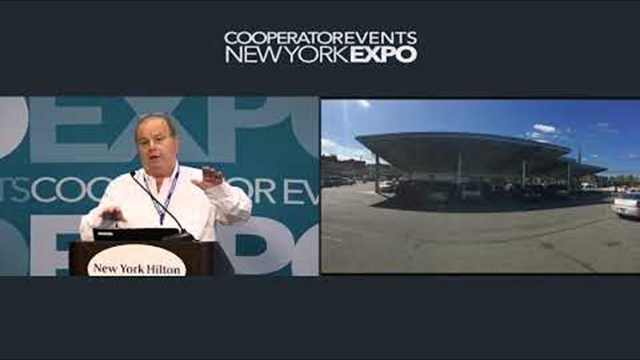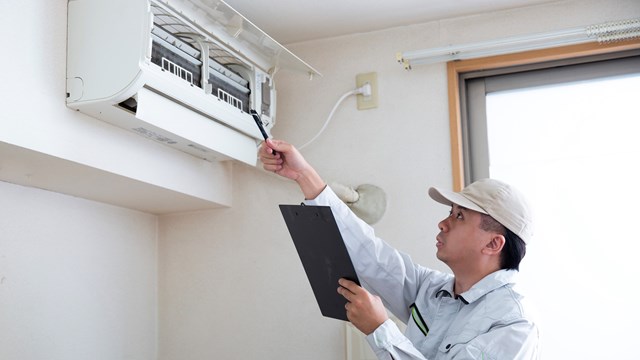
With a recent push by Mayor Bill de Blasio to extend former Mayor Michael Bloomberg's "Carbon Challenge" program to hotels (the program had previously encouraged universities, commercial properties and multifamily residences to reduce emissions of greenhouse gasses), sustainability is back in vogue. The Cooperator recently spoke to Stephen Doherty, the green-championing president of a co-op at 401 E. 74th St., known locally as The Amherst, about how he came to embrace sustainable living, and how he's helped bring that passion to his co-op, thereby increasing both affordability and quality of life.
The Cooperator: Tell us how you became the preeminent sustainability cheerleader for your co-op.
Stephen Doherty: I have a PhD in experimental physics and an MBA in finance. I’ve worked for multinational companies on both sides of the Atlantic. I’ve been dealing with these issues over many years.
Cooperator: For how long have you been active on your co-op board?
SD: I've been president for three-and-a-half years, during which time we’ve done much in terms of capital projects, improving communications to shareholders, newsletters, etc. I’m also building up more active shareholder committees, including a Green Committee. Our group has been able to implement both battery and CFL recycling. They’ve brought in a unit into which residents can place used electronics, and the city will remove those when the unit is full. We also have a clothing bank, and we’ve been actively working with various charitable organizations. Goodwill comes in every year. We’ve been working on the more practical side of recycling and just being better citizens, installing bike racks, those types of things.
Cooperator: How do you go about selling these initiatives to the rest of the board and the shareholders?
SD: In an informational meeting with shareholders in January, I explained the budgets that we'll have moving forward, and I was talking about putting in Combined Heat & Power to generate electricity in the building and essentially take us off the grid, while reducing both price per kilowatt and delivery costs. My goal for the building is to be able to reduce the amount of resources that we use to maintain the quality of life in this small versatile village in which we live. My perspective is that ‘being green’ in a building like ours means significantly reducing our environmental footprint.
Cooperator: What are some things you’re doing to achieve that goal?
SD: Our budget is around $5.1 million, over half of which goes to real estate taxes. Then we have staff salary, maintenance, etc. And the three big remainders are electricity, gas and water. I spend about $175,000 per year on water, $250,000 on gas, and about $110,000 per year on the common electricity. We're a mass-metered building, so I buy the electricity for the whole property, which is about $450,000 per year. The residents use about three-quarters of that, and the rest I spend to operate the boiler, pumps, lighting, roof fans, elevators, etc.
I installed a system made by a company called Enertiv, to track exactly where each dollar of that $110,000 was going. I put monitors on all the electrical panels in the common areas of the building, and am now monitoring usage in real time. The thing that surprised me most was that I was spending $20,000 and $10,000 to $15,000 per year to run the ventilation fans on the roof and operate the elevators, respectively. Once you understand how the money is being allocated, you realize that you either need to change equipment to more energy-efficient alternatives, or that you have some machines running when they need not be, on evenings or weekends when people aren’t using them. That’s what I’m looking at in my system profile, but I also want to monitor how water is being used and finally get the boiler running more efficiently. Because if you can save even 5 percent of $200,000, that’s pretty respectable.
Cooperator: Do you get any pushback from any shareholders or residents who are less willing to embrace your suggested initiatives?
SD: We really don’t.
Cooperator: Your embracing green and sustainable initiatives seems like an undeniable value proposition. Do you have an inkling that other similarly structured communities are doing similar things?
I meet other board presidents now through Midboro, our management company, and we talk about these things informally. A lot of it depends on the actual organizational structure of a building, whether you’re co-op or condo, or if you have owner-sponsored units as we do.
We were built in 1962, so we have certain challenges and advantages due to the building being 50 years of age. Because we’re fairly stable as an organization, it allows us to spend time thinking about the future. Were I dealing with urgent issues revolving around failures in the building, I would have to focus on those.
Cooperator: With whom on the board do you share this responsibility?
Other members of the board obviously pitch in. My treasurer is excellent. He’s also semi-retired, which you need to be to spend this amount of time. It’s really like running a small business. You can either do the basics and have your managing agents step in, or you can actively be involved. I actually handle most of the technology myself. With other board members, we divide the work, but those employed full-time and are younger are still building their careers, and they don’t have as much time to spend on board activity. I probably spend about two-to-three days a week doing this.
Cooperator: And what was your major inspiration for taking on this level of obligation?
SD: I ran a slate of five candidates against a previous board that hadn’t been doing a good job, and we knocked them off. I have an operational background, and I’ve lived in the building for 18 years. My personal view is that, in a co-op, we all need to take our turn doing things, and if you have the skills to do these things, then you should.
Michael Odenthal is a staff writer for The Cooperator.









Leave a Comment